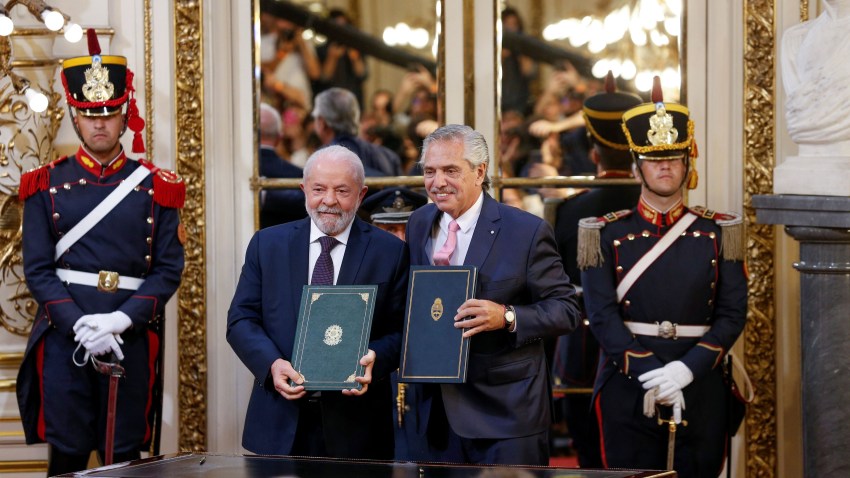Eager to reverse the damage his predecessor did to Brazil’s regional ties, President Luiz Inacio Lula da Silva made his first international trip this week to neighboring Argentina, where he attended a summit of the Community of Latin American and Caribbean States, or CELAC. His aim was to smooth rocky relations with Buenos Aires and the rest of Latin America. But even before Lula had landed, even before he held his first meetings with Argentine President Alberto Fernandez and the other leaders attending the summit, a casually tucked away line in an article co-authored by Lula and Fernandez sent shockwaves.
“Two brotherly peoples are meeting again,” the two leftist leaders wrote, vowing to bring their countries together in their fight against poverty and hunger. Only further down, in the article’s 12th paragraph, did they announce their decision to move forward with a plan to create a common currency, starting with their two countries and inviting other South American countries to join. The currency doesn’t exist, but it already has a name: the sur, Spanish for “south.”
If it were to be adopted by the rest of the continent, the sur would become the world’s second-largest currency zone behind the euro, the common European currency that perhaps served as an inspiration for its name. The idea is that it would help the region ease its trade relations, making it more dynamic, less reliant on the U.S. dollar and better able to control inflation.

